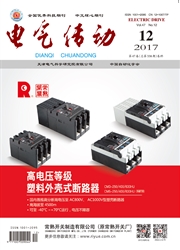

 中文摘要:
中文摘要:
分析了4种三电平调制策略:载波同相层叠策略(PD-PWM),载波反相层叠策略(POD-PWM),载波同相交叠策略(COPWM-A)和载波反相交叠策略(COPWM-B)的基本原理,并从中点电压波动、输出相电压基波幅值及总谐波失真(THD)特性3方面对4种策略进行了对比研究。得到2个结论:1)4种策略中,载波交叠策略引起的中点电压波动小,输出电压基波幅值大,但含有低次谐波多,THD较大;2)载波反相调制策略(POD-PWM和COPWM-B)比载波同相调制策略(PD-PWM和COPWM-A)相电压THD特性好,但线电压THD特性差。实验结果验证了分析的正确性。
 英文摘要:
英文摘要:
Four kinds of three-level carrier-based PWM strategies which are called phase disposition pulse widthmodulation(PD-PWM),phase opposition disposition pulse width modulation(POD-PWM),carrier overlappingpulse width modulation strategy A(COPWM-A) and carrier overlapping pulse width modulation strategy B(COPWM-B)were evaluated in three aspects:influence to the neutral point(NP)potential fluctuation,fundamentalamplitude and output total harmonic distortion(THD)performance. The analysis shows that:1)In all of the fourstrategies,CO-PWMA and CO-PWMB have smaller NP potential fluctuation,larger fundamental amplitude whereasworse THD performance,2)In all of the four strategies,POD-PWM and CO-PWMB have better phase voltage THDperformance whereas worse line voltage THD performance. Experimental results prove the correctness of the analysis.
 同期刊论文项目
同期刊论文项目
 同项目期刊论文
同项目期刊论文
 期刊信息
期刊信息
